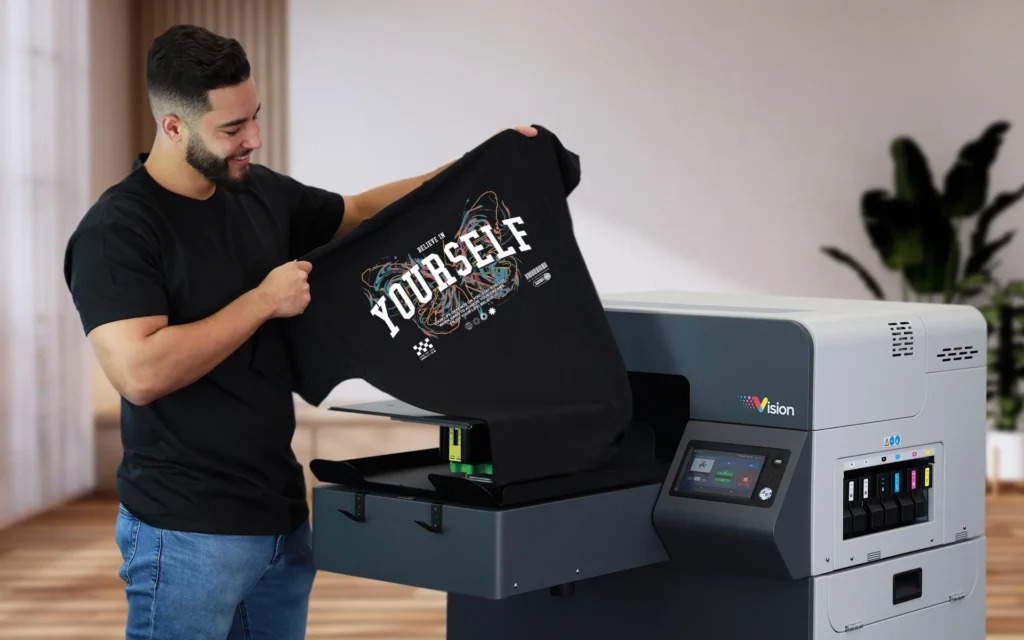T-shirt printing is a thriving industry that blends creativity, fashion, and technology to produce unique apparel. Whether you’re an entrepreneur starting your own custom T-shirt business, a hobbyist looking to create personalized designs tshirt printer, or a designer trying to make your mark in the fashion world, understanding T-shirt printing and the different types of printers available can be a game-changer. This article dives into the world of T-shirt printers, covering the various types, techniques, and benefits of using them.
What is a T-Shirt Printer?
A T-shirt printer is a device or machine used to transfer custom designs, logos, graphics, or text onto T-shirts or other garments. These printers are integral in the production of custom-designed clothing, especially for small to medium-sized businesses that focus on personalized apparel. From screen printing to direct-to-garment (DTG) printing, there are numerous methods for printing designs on fabric, and the type of printer you choose will depend on factors like cost, volume, design complexity, and the type of fabric you plan to print on.
Types of T-Shirt Printers
-
Screen Printing Screen printing, also known as silk screening, is one of the oldest and most common methods of T-shirt printing. It involves creating a stencil (or screen) of the design and using that stencil to apply layers of ink onto the fabric. While screen printing can be time-consuming, especially for designs with many colors, it is highly cost-effective for bulk printing and produces long-lasting, vibrant results.
-
Best for: Large print runs, bold graphics, and simple designs.
-
Advantages: Cost-efficient for large orders, durable prints.
-
Limitations: High setup costs, not ideal for intricate designs or small orders.
-
-
Direct-to-Garment (DTG) Printing DTG printing is a newer method that uses inkjet technology to print designs directly onto the fabric. A DTG printer sprays the ink onto the fabric, much like a regular printer sprays ink onto paper. This method allows for more intricate designs, including full-color images and gradients, without the need for screens or setup.
-
Best for: Small orders, intricate designs, full-color prints.
-
Advantages: No setup required, high-quality prints, quick turnaround.
-
Limitations: Slower than other methods for large orders, can be costly per shirt for bulk printing.
-
-
Heat Press Printing Heat press printing uses a special transfer paper that is printed with a design and then pressed onto the fabric using heat and pressure. This method is often used for creating custom T-shirts for small businesses or personal use. Heat transfer vinyl (HTV) is also commonly used in this method, where the design is cut out of vinyl and then pressed onto the T-shirt.
-
Best for: Small runs, personal or custom designs, varied materials.
-
Advantages: Low setup cost, versatile, easy to use for beginners.
-
Limitations: The print may not be as durable as other methods, especially for larger prints or long-term wear.
-
-
Sublimation Printing Sublimation printing uses heat to transfer dye onto fabric. Unlike other methods, sublimation requires synthetic fabrics like polyester, as the ink bonds with the fabric fibers. The result is a vibrant, full-color design that becomes part of the fabric, rather than sitting on top of it like in other printing methods.
-
Best for: Full-color, all-over prints, sportswear, and polyester fabrics.
-
Advantages: Vivid colors, long-lasting, works well on polyester.
-
Limitations: Limited to light-colored, synthetic fabrics, not suitable for cotton.
-
-
Vinyl Cutting Vinyl cutting involves cutting out shapes or text from a roll of heat transfer vinyl and then pressing the design onto the fabric. This method is often used for simple logos, names, or number prints, such as those found on sports jerseys. It is particularly effective for small runs and one-off designs.
-
Best for: Simple logos, names, and numbers, sports jerseys.
-
Advantages: Durable, precise, great for text-based designs.
-
Limitations: Limited to simple designs, not suitable for full-color prints.
-
Choosing the Right T-Shirt Printer for Your Business
When choosing a T-shirt printer, consider the following factors:
-
Volume: If you plan on producing a high volume of T-shirts, investing in a screen printer or a high-speed DTG printer may be the best choice. If you’re focusing on custom or one-off designs, a heat press or vinyl cutter may suffice.
-
Design Complexity: If your designs are intricate and require full-color prints, a DTG printer or sublimation printer is ideal. For simpler designs, screen printing and vinyl cutting will provide the best results.
-
Fabric Type: Consider the type of fabric you will be printing on. Some printers work best on cotton, while others are designed for synthetic materials or a mix of both.
-
Budget: Printers vary widely in price, with some models costing thousands of dollars. Be sure to factor in both the initial cost and ongoing maintenance when choosing a printer.
-
Quality and Durability: Depending on your target market, you may need to prioritize quality and durability. Screen printing, sublimation, and DTG printing all produce durable results, but heat press and vinyl prints may wear over time, especially after repeated washing.
Conclusion
T-shirt printing is an exciting and versatile industry with various methods available to suit different needs and budgets. Whether you choose screen printing, DTG printing, heat press, sublimation, or vinyl cutting, each method has its strengths and is suited for specific types of designs, fabric, and order quantities. By understanding your specific requirements and considering the different types of T-shirt printers, you can find the perfect solution to bring your custom designs to life and build a successful apparel brand or hobby.



